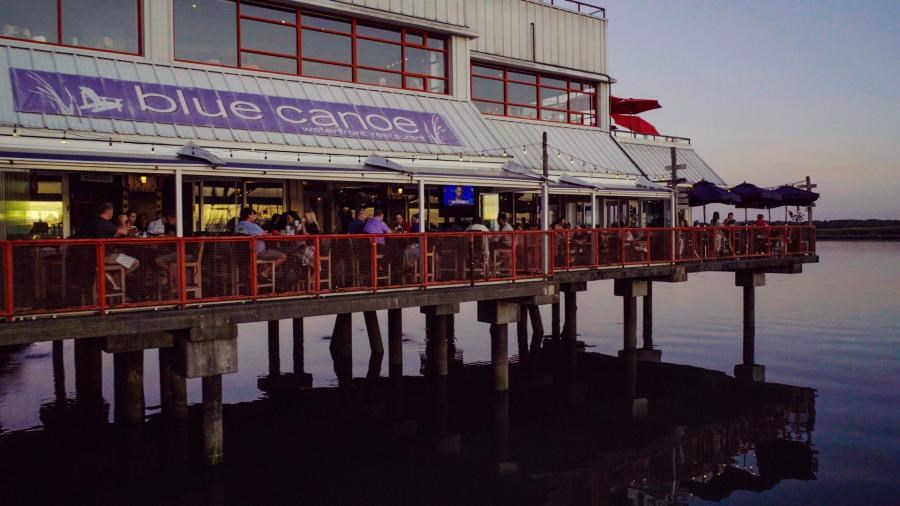Brothels, bars and gambling dens were once prolific in Steveston, keeping the community vibrant.
But now Steveston “rolls up the sidewalk at 9 o’clock,” according to a local developer who was advocating for more housing in Steveston Village to revitalize the area, especially in the off-peak months.
Dana Westermark was speaking to city council Monday as they deliberated whether to remove residential uses and reduce the height of buildings on a six-property waterfront strip on the south side of Bayview Street.
In addition to a vibrant nightlife making it a “happening place,” Westermark noted there used to be 27 canneries that “dominated” the Steveston waterfront.
“To suggest downscaling those buildings to two-storey buildings is completely contrary to the historical context,” he told city council.
Former city councillor Linda Barnes, also arguing for residential in this area, said she’d been told by the Steveston Business Association that 11 businesses were for sale in the village, emphasizing the need for more residential development to support them.
But Mayor Malcolm Brodie pointed out homes have been added to Steveston Village, from No. 1 Road to the Britannia Shipyards, and the same complaint from merchants is still heard about businesses struggling to make a go of it.
“There are hundreds of residences that were put in as part of the BC Packers project, and yet the same complaint is made before that as after that, during the winter months, the merchants need more support,” Brodie said.
The original recommendation from city staff was split into two parts, with all councillors agreeing to reduce the height of buildings on this strip to nine metres.
Three councillors, Alexa Loo, Andy Hobbs and Chak Au, however, voted against removing residential uses on about two blocks on the south side of Bayview Street, where the Blue Canoe and the Cove are located.
This was defeated by the majority of city council.
There are two current applications for residential buildings within this waterfront strip – one for 22 condos on the empty lot next to the Blue Canoe, and one for a single 5,000-square-foot residence above the building at 3900 Bayview St.
These applications haven’t come to city council for approval yet, and, in fact, a report to council said if the residential uses were removed, city staff would ask the applicants to withdraw them.
This isn’t the first time she’s seen an Asian applicant treated this way, said Loo.
The city councillor was referring to a proposal to build 22 condos on the water side of Bayview.
This is the second time while on council she’s seen an Asian buyer encouraged to buy a property, be told it was zoned for their “dream project,” but then council “yanked the rug out from under them, then denied the application and downgraded the property,” said Loo.
The issue of having homes along this strip had been back and forth, with city staff recommending removing all residential uses. However, when it came up at last week’s planning meeting, the five-person committee went against this recommendation, saying some homes should be allowed on this section of Bayview.
Hobbs argued having residential above commercial, including in Steveston, is an “effective way” to develop.
“You can see it in False Creek, you can see it in Olympic Village, you can see it in Coal Harbour, you can see it at the foot of No. 2 Road,” Hobbs said. “That’s an effective way to revitalize an area and to have 24/7 presence in that area, because Steveston does roll up at 9 o’clock.”
He also said city council should separate current applications from their discussion on a policy for an area.
The leaseholder for the 3900 Bayview St. property, Brian Veljacic, who wanted to build his retirement home on top of an existing building, said city council was “screwing” him after he complied with all requirements over a three-year period to apply to build there.
Meanwhile, Evan Dunfee, who ran unsuccessfully for city council in October, sent an email advocating for residential uses on the waterfront.
When the city consulted with the public in 2017 on the area plan, “no one wrote or spoke to council asking for residential uses to be eliminated or heights reduced,” Dunfee said.
About 54 per cent said they wanted no change in the maximum density and height and 83 per cent supported buildings with Cannery-style pitched roofs.
“Mixed residential use is the gold standard for sustainability and livability and integrated beautifully and effectively all around the world, including on the water,” he said in his email.
As for brothels, bars and gambling dens, Coun. Carol Day was adamant that’s not the vision for the village.
“I don’t think that’s what we’re looking for in 2022,” Day said. “I think what we are looking for is developments that will embrace the fishing history of Richmond.”
Westermark also clarified to the News he wasn’t advocating for brothels, bars and gambling dens, rather he was pointing out the colourful history of the area of a “rough and tumble industrial town.”
The issue of building homes on this waterfront strip will come back to a public hearing in the next few weeks.


